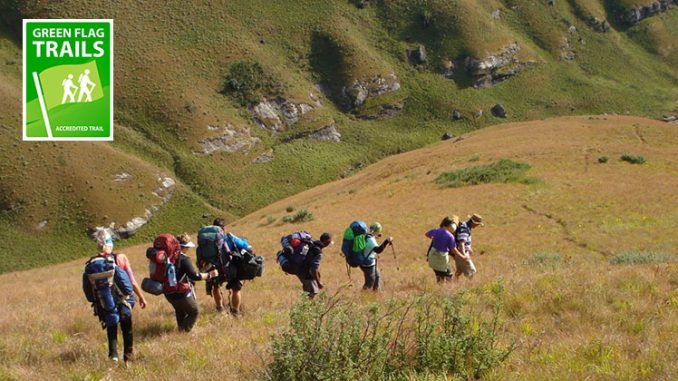
Fear of the unknown is the single largest reason for people to “rather stay at home”, than venture into nature. Tourists want reassurance. Thus, hotels are star graded, beaches are awarded Blue Flag status, and nature trails are Green Flag accredited.
Seasoned hikers have their own experience and fellow hikers to help them, to some extent, to choose a trail. The rest of us have no means of assessing an advertised trail’s quality standard, risk potential or difficulty in terms of fitness level required. Green Flag certification provides this service.
The Green Flag Trails accreditation system (endorsed by all the main providers of hiking trails in South Africa) is not a grading system that promotes one trail as being superior to another. It’s a scientifically based, accurate objective assessment that allows prospective hikers to make well-informed decisions; ensuring them that they will get what is being promised, and will thus be assured of a good trail experience. No unexpected surprizes.
Green Flag assessments take the following aspects into consideration:
- Safety, at huts, as well as along the path, is assessed. It looks at how risk is managed, acknowledging that a well-judged level of adrenalin rush may add to the adventure experience.
- Accommodation: A Classification of accommodation types is given (Luxury, Comfortable, Basic or Rustic) – not implying that luxury is “better than” rustic.
- Environment type: Classifying the environment as either Pristine, Rural, or Semi-urban. Not all hikers prefer a wilderness experience every time they go hiking.
- Environmental responsibility. Ensuring that the trail is maintained responsibly. We have a responsibility towards our natural heritage; which is also the prime resource we are using.
- Difficulty rating: Objectively calculated and ranked on a scale of 1 – 10+ in terms of energy required.
- Technical classification: Walk, scramble, or climb – signifying the level of experience one needs to have.
- Service and facilities: Such as quality of the car park, stiles, bridges, access road, etc. As well as the correctness of the marketing brochures/website info.
Green Flag trails are thus, in this sense, “quality trails” in that one can be assured you will get a good experience if you choose the trail according to your aptitude.
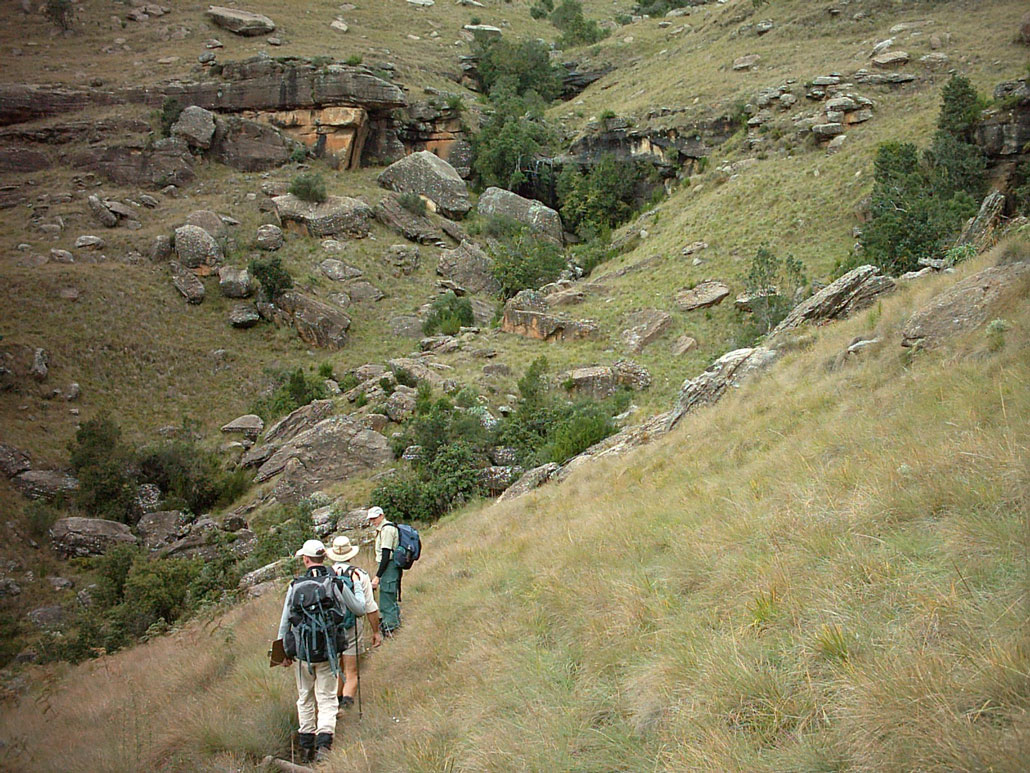
Why Quality Trails Matter
Benefits to trail users
By hiking, paddling, riding or climbing Green Flag Trails, trail users are assured that they will have a satisfying experience as they will find the trail character and facilities exactly as advertised, safe and well managed.
Personal and community enhancing values include:
- Description of nature – how pristine is the trail environment?
- Classification of the cultural heritage along the trail.
- Description of the safety issues – come well-prepared for (perhaps) a bit of adrenalin rush.
- Details of services and facilities – what to pack in your rucksack.
- Assessment of scenic values, special features, etc.
- A well-managed, safe, and relaxed experience – no unexpected surprizes!
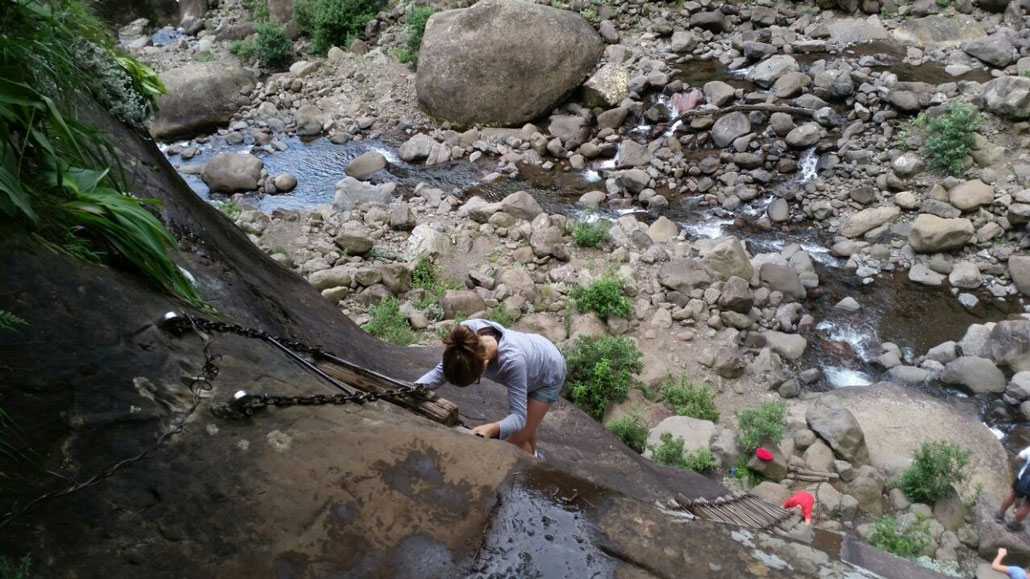
Benefits to trail managers and owners
In cases where trail users lodge legal claims for compensation for injuries sustained, the owner will be regarded as having provided a responsible recreational product to the public – assessed by an outside professional body. Note that this does not imply full indemnity against all mishaps and irresponsible trail managers.
Through its unique audit procedure, Green Flag accreditation identifies, acknowledges and rewards those trails that demonstrate and practice responsible management, in contrast to trails which negate the enjoyable experience and safety of hikers and responsible environmental stewardship.
With the Green Flag logo as a quality assurance mark, owners are adding credibility to their trail and making trail users aware that they have their enjoyment of a quality trail experience at heart. This approach will expand the trails’ market by ensuring satisfied trail users, which in turn results in sustainable income for the trail.
The market sector is increased as the assurance that a trail is safe and under responsible management, will cancel trail users’ feeling of apprehensiveness to visit unknown areas and foreign countries.
Green Flag Trails provides the necessary professional guidelines to trail managers for maintenance and monitoring procedures of their trails so as to help conserve the natural heritage where trails pass through, and save the owner much time in doing such inspections himself.
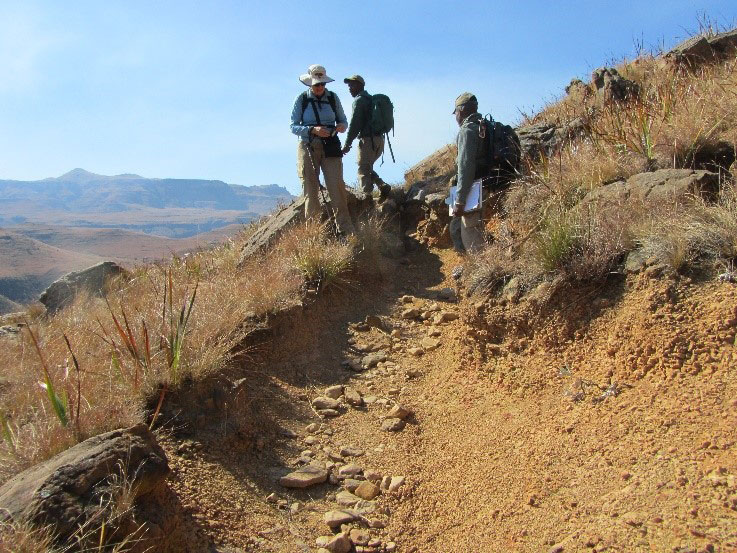
Benefits to the environment
Green Flag Trails ensure the effective use of land. Large tracks of land on privately owned farms and government land lies idle as it is regarded as “unproductive ground”. These areas are often excellently suited for hiking: mountain slopes, deep valleys, indigenous forests, floodplains, riverine stretches, even marshy land. Hiking is a non-consumptive utilisation of resources and provides an extra, low-investment income to land owners.
Green Flag monitors the extent of exotic and invasive plant species, pollution, erosion and all other environmental problems.
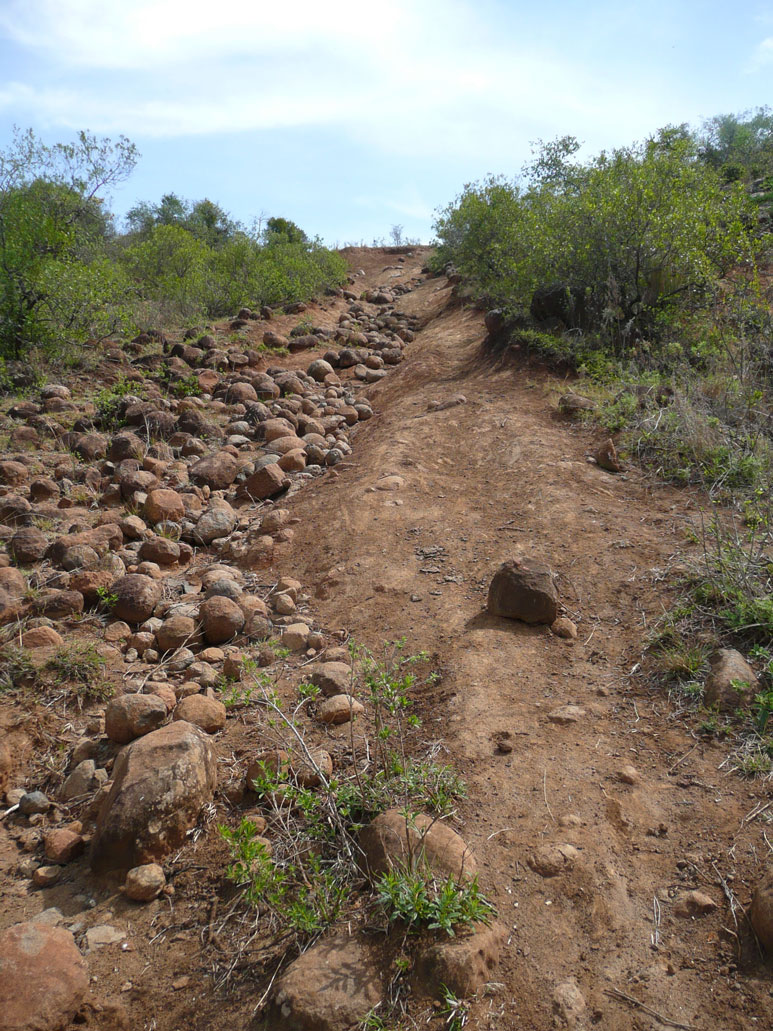
Benefits to economy and eco-tourism
Green Flag Trails runs training courses in trail development, which includes planning, building and auditing of trails.
- Thereby enhancing capacity building and job creation.
- As a capacity building service for government officials and private individuals, the Green Flag Trail system delivers a service to the tourism industry by assessing and providing feedback on the quality of the services rendered by trail owners/managers
- Green Flag increases the monetary value of trails (hiking, canoes, horse-riding and or kloofing routes) to the tourism sector of the economy.
- It benefits the outdoor equipment industry.
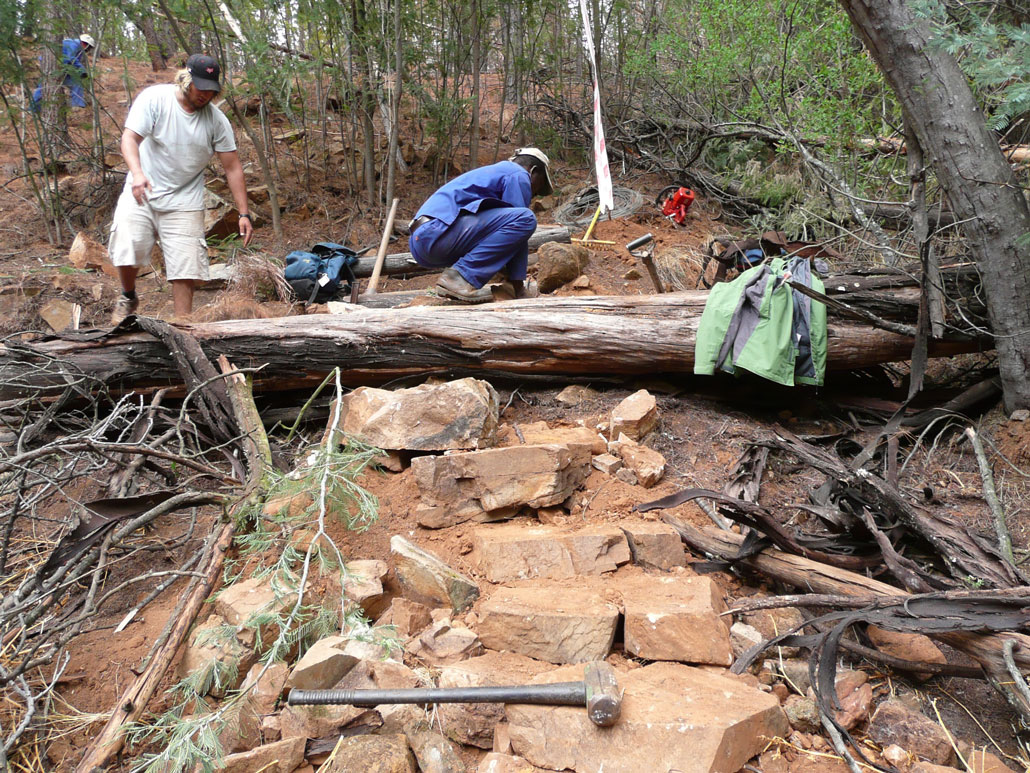
Application of the system
The Green Flag Trails system was developed at the University of Pretoria (under the leadership of Prof Leon Hugo). It is being implemented by all large trail provision agencies in South Africa: KZN-Ezemvelo; SANParks, Cape Nature, SAFCOL, KLF, Cape Pine (MTO) as well as major urban municipalities such as Johannesburg and Pretoria (Tshwane) and many private owners of resorts (such as Forever Resorts) and farms.
Which trails are Green Flag accredited?
There are currently 38 hiking trails in South Africa that have Green Flag Trail status, with at least another 30 pending accreditation or re-assessment.
Internationally countries such as Nepal, Swaziland, St Helena, Namibia, Peru and Mozambique all have Green Flag trails. The most well-known trails that have received Green Flag status include the Inca trail in Peru; the High Peak trail on the island of St Helena; and the Otter trail in South Africa; the eight-day Annapurna Panoramic trail in the Himalayas; the Khomas Hochland trail in Namibia.
An Alphabetical as well as Provincial listing of all accredited Green Flag Trails (Day Walks and Multi-day Trails) can be viewed at: http://greenflagtrails.co.za/hiking-trails/
For overview of Green Flag Trails system, see www.greenflagtrails.org

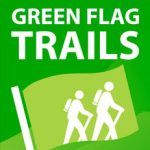
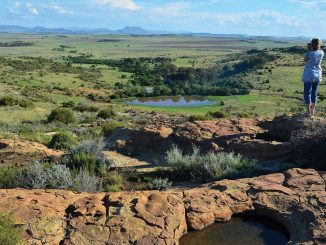
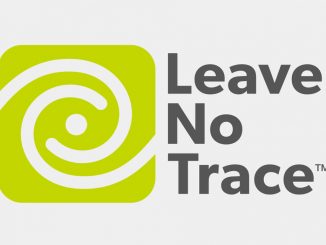
Thanks for the news contribution on Green Flag. The World Trails Network (of Galeo Saintz) has had a successful international conference in Santiago, Spain where the concept of Green Flag assessment for determining trail quality has been discussed in depth. Six countries asked for the opportunity to audit one of their trails as an experiment to see if the system is indeed flexible and accurate enough to be applied internationally as a standard. Such a step will of course asist much in making international movement of hikers that much more easy; giving suurence of responsible tail management.The countries interested are Russia, Hungary, Ireland, USA, Lebanon, Kenya…Nepal of course already applying it to the Himalayan trail system.For more information pls contact info@greenflagtrails.org
Great news! Thanks for the update Prof Hugo!
Hi
I heard a talk on the radio (RSG) today and am exploring the website. Sadly the last two links are not available? I wanted to know which trails in South Africa have green flag status. I also wanted to comment on the Otter trail which I have recently (January 2024) completed. Can you assist?
It seems the Green Flag system has died after Leon Hugo ended his involvement. Nothing has happened the last 3 years and one cannot even get a list of SA’s accredited Green Flag trails! So sad……